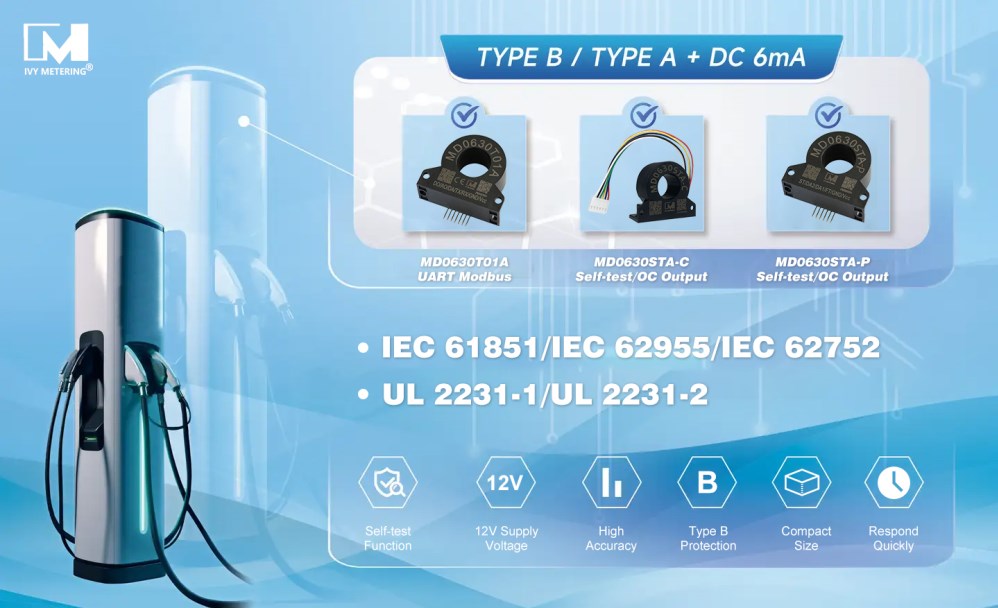Regulation & Adoption of RCD for Different Countries

Australia
In Australia, residual current devices have been mandatory on power circuits since 1991 and on light circuits since 2000. A minimum of two RCDs is required per domestic installation. All socket outlets and lighting circuits are to be distributed over circuit RCDs. A maximum of three subcircuits only, may be connected to a single RCD.
Austria
Austria regulated residual current devices in the ÖVE E8001-1/A1:2013-11-01 norm (most recent revision). It has been required in private housing since 1980. The maximum activation time must not exceed 0.4 seconds. It needs to be installed on all circuits with power plugs with a maximum leakage current of 30 mA and a maximum rated current of 16 A.Additional requirements are placed on circuits in wet areas, construction sites and commercial buildings.
Belgium
Belgian domestic installations are required to be equipped with a 300 mA residual current device that protects all circuits. Furthermore, at least one 30 mA residual current device is required that protects all circuits in "wet rooms" (e.g. bathroom, kitchen) as well as circuits that power certain "wet" appliances (washing machine, tumble dryer, dishwasher). Electrical underfloor heating is required to be protected by a 100 mA RCD. These RCDs must be of type A.
Brazil
Since NBR 5410 (1997) residual current devices and grounding are required for new construction or repair in wet areas, outdoor areas, interior outlets used for external appliances, or in areas where water is more probable like bathrooms and kitchens.
Denmark
Denmark requires 30 mA RCDs on all circuits that are rated for less than 20 A (circuits at greater rating are mostly used for distribution). RCDs became mandatory in 1975 for new buildings, and then for all buildings in 2008.
France
According to the NF C15-100 regulation (1911 -> 2002), a general RCD not exceeding 100 to 300 mA at the origin of the installation is mandatory. Moreover, in rooms where there is water, high power or sensitive equipment (bathrooms, kitchens, IT...), each socket outlet must be protected by an RCD not exceeding 30 mA. The type of RCD required (A, AC, F) depends upon the type of the equipment that will be connected and the maximum power of the socket outlet. Minimal distances between electrical devices and water or the floor are described and mandatory.
Germany
Since 1 May 1984, RCDs are mandatory for all rooms with a bath tub or a shower. Since June 2007 Germany requires the use of RCDs with a trip current of no more than 30 mA on sockets rated up to 32 A which are for general use. (DIN VDE 0100-410 Nr. 411.3.3). It isn't allowed to use type "AC" RCDs since 1987, to be used to protect humans against electrical shocks. It must be Type "A" or type "B".
Italy
The Italian law (n. 46 March 1990) prescribes RCDs with no more than 30 mA residual current (informally called "salvavita"—life saver, after early BTicino models, or differential circuit breaker for the mode of operation) for all domestic installations to protect all the lines. The law was recently updated to mandate at least two separate RCDs for separate domestic circuits. Short-circuit and overload protection has been compulsory since 1968.
India
According to Regulation 36 of the Electricity Regulations 1990
a) For a place of public entertainment, protection against earth leakage current must be provided by a residual current device of sensitivity not exceeding 10 mA.
b) For a place where the floor is likely to be wet or where the wall or enclosure is of low electrical resistance, protection against earth leakage current must be provided by a residual current device of sensitivity not exceeding 10 mA.
c) For an installation where hand-held equipment, apparatus or appliance is likely to be used, protection against earth leakage current must be provided by a residual current device of sensitivity not exceeding 30 mA.
d) For an installation other than the installation in (a), (b) and (c), protection against earth leakage current must be provided by a residual current device of sensitivity not exceeding 100 mA.
Malaysia
In the latest guidelines for electrical wiring in residential buildings (2008) handbook, the overall residential wiring need to be protected by a residual current device of sensitivity not exceeding 100 mA. Additionally, all power sockets need to be protected by a residual current device of sensitivity not exceeding 30 mA and all equipment in wet places (water heater, water pump) need to be protected by a residual current device of sensitivity not exceeding 10 mA.
New Zealand
From January 2003, all new circuits originating at the switchboard supplying lighting or socket outlets (power points) in domestic buildings must have RCD protection. Residential facilities (such as boarding houses, hospitals, hotels and motels) will also require RCD protection for all new circuits originating at the switchboard supplying socket outlets. These RCDs will normally be located at the switchboard. They will provide protection for all electrical wiring and appliances plugged into the new circuits.
North America
GFCIs approved for protection against electric shock trip at 5 mA within 25 ms. A GFCI device which protects equipment (not people) is allowed to trip as high as 30 mA of current; this is known as an Equipment Protective Device (EPD). RCDs with trip currents as high as 500 mA are sometimes deployed in environments (such as computing centers) where a lower threshold would carry an unacceptable risk of accidental trips. These high-current RCDs serve for equipment and fire protection instead of protection against the risks of electrical shocks.In the United States the American Boat and Yacht Council requires both GFCIs for outlets and Equipment Leakage Circuit Interrupters (ELCI) for the entire boat. The difference is GFCIs trip on 5 mA of current whereas ELCIs trip on 30 mA after up to 100 ms. The greater values are intended to provide protection while minimizing nuisance trips.
Norway
In Norway, it has been required in all new homes since 2002, and on all new sockets since 2006. This applies to 32 A sockets and below. The RCD must trigger after a maximum 0.4 seconds for 230 V circuits, or 0.2 seconds for 400 V circuits.
Taiwan
Taiwan requires circuits of receptacles in washrooms, balconies, and receptacles in kitchen no more than 1.8 meters from the sink the use of earth leakage circuit breakers. This requirement also apply to circuit of water heater in washrooms and circuits that involves devices in water, lights on metal frames, public drinking fountains and so on. In principle, ELCBs should be installed on branch circuits, with trip current no more than 30mA within 0.1 second according to Taiwanese law.
Turkey
Turkey requires the use of RCDs with no more than 30 mA and 300 mA in all new homes since 2004. This rule was introduced in RG-16/06/2004-25494.
United Kingdom
The current (18th) edition of the IEE Electrical Wiring Regulations requires that all socket outlets in most installations have RCD protection, though there are exemptions. Non armoured cables buried in walls must also be RCD protected (again with some specific exemptions). Provision of RCD protection for circuits present in bathrooms and shower rooms reduces the requirement for supplementary bonding in those locations.RCDs used for shock protection must be of the 'immediate' operation type (not time-delayed) and must have a residual current sensitivity of no greater than 30 mA.
RCD and leakage protection exist everywhere, some time the requirements are 5mA 6mA 10mA 15mA 20mA 30mA leakage current alarming etc, some times the name shall be leakage current sensor, leakage current detector, Residual current monitor, RCD etc. For more info plz visit www.ivy-metering.com












